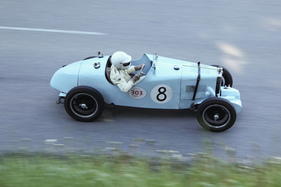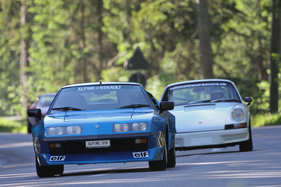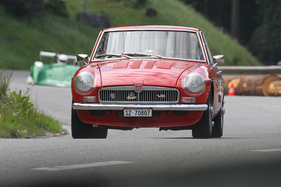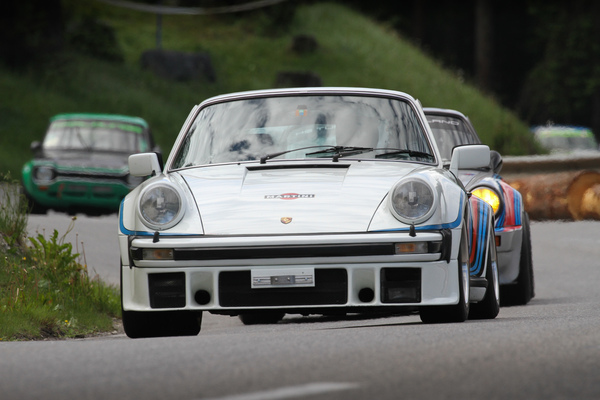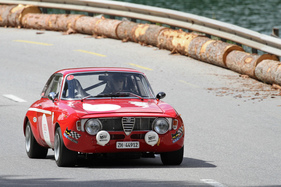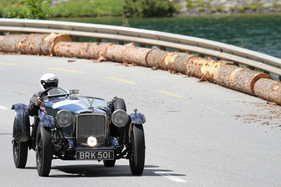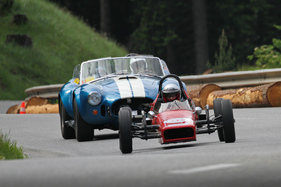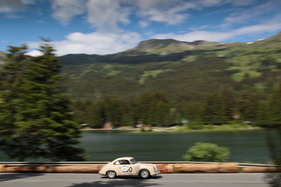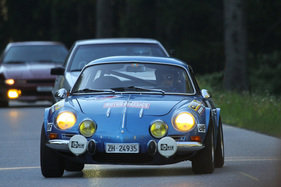It was a unique coincidence. On the same day, two circuit racing events took place in Switzerland, even though circuit racing has been banned in the Alpine democracy since 1955. The trigger at the time was the tragic accident at the 24 Hours of Le Mans, but while all the surrounding countries soon allowed car racing again, church circles in Switzerland obtained a permanent ban. There were exceptions from time to time, but only on a low flame. Until last weekend, when Formula E single-seaters were allowed to race in circles in the city of Zurich again thanks to an exemption.

The Lenzerheide Motor Classics has a much longer tradition, as it took place for the seventh time on June 8-10, 2018.
Astonishing parallels
The two circuits in Lenzerheide and Zurich were almost exactly the same length, measuring 2.45 and 2.46 km respectively. Formula cars raced on both circuits, a good dozen in Lenzerheide and 20 at the Formula E Grand Prix.

There were eleven bends to negotiate in Zurich, in Lenzerheide there were hardly any fewer, although there was no long straight, but the track between the Rothorn valley station and the village offered a fast straight along the lake, interrupted only by slight bends.
Start and stop
However, while the Formula E cars in Zurich had to complete 50 laps with only one complete stop (to change vehicles), the Lenzerheide drivers had a slow zone and a drive-through at the start every lap. After every 7 to 10 laps, a field was waved out and then had a few hours break again. Significantly less stress and more free time for the amateur racers in the mountains.
The sound makes the music
The biggest difference, however, was probably the soundtrack. While the standard Formula E racing cars sound like a cross between a streetcar and a racetrack and barely make it above room volume, the sound in Lenzerheide was really loud.

This became clear at the latest when the Ferrari 639 Formula 1 racing car from 1989 was started. Almost everything from one to 12 cylinders could be heard in Lenzerheide and no fan at the track would have thought that this was noise.
A variety of shapes instead of a standard chassis
Even greater than the acoustic difference, however, was certainly the variety of shapes at the Lenzerheide Motor Classics.

While the Formula E racers all look the same with the exception of their livery (standard chassis), visitors to the historic event in Graubünden were able to compare cars from over 100 years ago.

The oldest car on the circuit was Schawalder's brute LaFrance from 1917. Four cylinders and 14.5 liters of displacement produce over 100 hp, which the driver knew how to use skillfully through the serpentine along the lake.

All types of vehicles from two to four wheels were at the start in Lenzerheide. Around 40 motorcycles/carriages and 160 cars had registered, many of them repeat offenders, as the coherent concept is winning over more and more classic car and youngtimer owners. The year of manufacture limit was set at 1993, which also gave younger cars the opportunity to take part.
Touring cars, coupés and convertibles were represented in large numbers in fields 1 to 5, fields 6 and 7 were mainly occupied by racing cars, field 8 was dedicated to the sponsor Villa Trasqua and was actually filled with very interesting vehicles from the Mille Miglia. But anyone looking forward to seeing an Alfa Romeo 6C 1750, a Lancia Aurelia or an Alvis SB20 was disappointed. Most of the vehicles at the start were different, albeit attractive.
Non-stop
With the best weather conditions on both "race days", only the lunch break offered an opportunity to take a breather, otherwise all the fields circled the circuit twice in the morning and twice in the afternoon.

Of course, there was no timekeeping, as these were just demo runs. The drivers thanked us with a level-headed driving style, so that there were hardly any retirements and if there were, then these were primarily due to technical problems.
Exotic cars to enjoy
Among the 160 or so automobiles, there were some cars that visitors to the Motor Classics were unlikely to see, such as the VW SP2 from Brazil, the Nomad Mk1 from 1967 or the Hudson Hornet Six.

But of course there were also many a bread-and-butter car from the past to be seen, especially the village group, which took a much more leisurely approach, offered a reunion with the everyday mobility aids of the past, from the Opel Kadett to the Fiat 500 and the Citroën Traction Avant. Once a common sight on the roads, today they are often more exotic than many a super sports car.
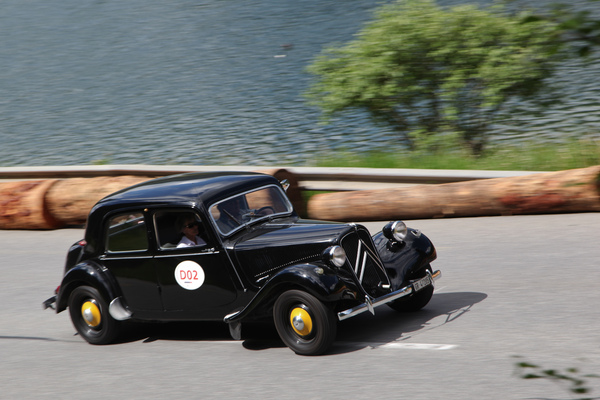
A Lenzerheide Motor Classics is also planned for 2019 and will take place in Lenzerheide from June 14 to 16, 2019.
If you are looking for a specific car or don't want to miss any of the more than 350 photos, we recommend the separate picture gallery .





























